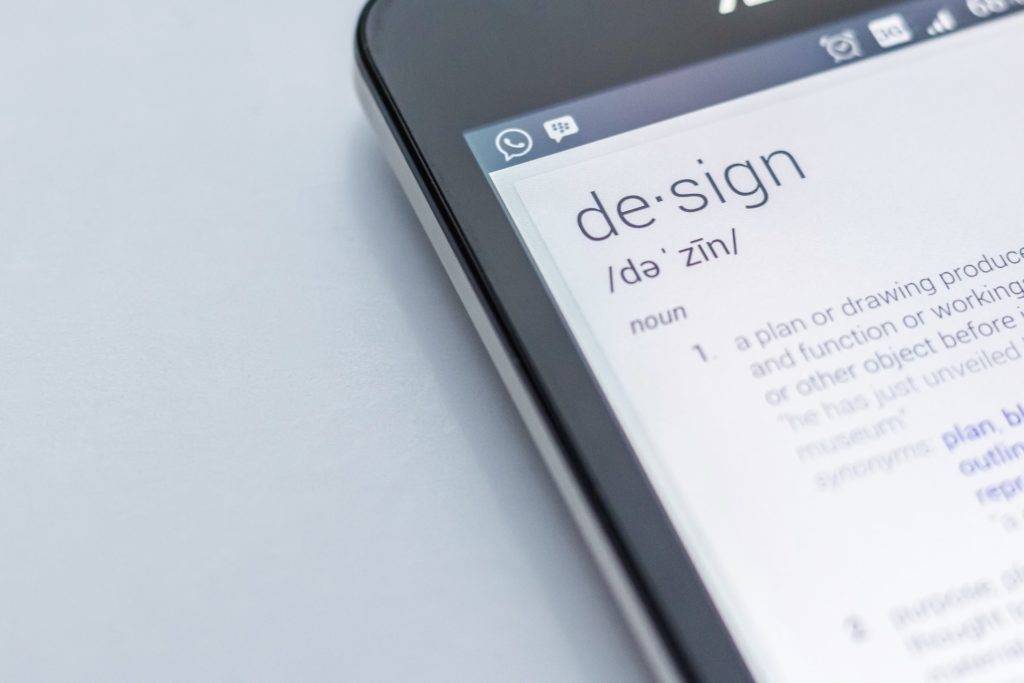
15 Blog Formatting Tips to Increase Your Readers’ Time on Page
“Why aren’t people spending time on our site and reading our content? We spent all this time putting the right information out there. People are just lazy!”
Hold that thought.
First, kudos on spending time on creating good, quality content. That’s important.
But I have to tell you, it’s not that your readers are lazy. To keep readers around, it requires being strategic and avoiding overwhelming posts.
Think about it. People scan or skim content first because they want to find the answer or solution they’re searching for as quickly as possible. They don’t want to waste time on a web page or website that doesn’t have their answer.
Even if your content is really good, quality information, people will still scan it first. They’re looking for those clues that tell them it’s quality. Then, once they find those clues, they’ll spend the effort and read more deeply.
Formatting your blog well is important for directing readers through your content, while also making it as easy as possible for them to both scan and read it.
So here are 15 tips for formatting your blog well — which should both increase users’ time on your posts and help your readers find the answers they’re looking for.
Formatting Your Text
1. Use headings and subheadings.
Headings and subheadings are probably the most essential blog formatting tool you have. These are the real clues to making your content scannable and easier to read on a device.
While you don’t want them to overwhelm the post, you want to use enough of them to break up any long chunks of text. And you should use a variety of headings in each post.
Think of it like you’re creating an outline, or a visual hierarchy within your post. Higher-level concepts should be larger in size (your H2 tags), while subtopics should be smaller (H3, H4 and so on) and fit within each larger concept.
Most importantly, these headings should tell the reader what’s in it for them — or what they’re going to get if they read below that heading.

2. Break up your paragraphs.
People’s eyes begin to glaze over when we’re forced to read a long chunk of text. And if it’s long on a laptop screen, think of how long that paragraph is on a phone.
Breaking your text into shorter paragraphs makes it easier to read. Think one to four sentences per paragraph. You don’t want each of your paragraphs to be one sentence long, of course, but having a mix of paragraph lengths is more pleasing to the eye and gives your eyes some natural breaks.
3. Change up your sentence length.
Varying up your sentence length also makes things easier to read. You don’t want a blog post full of long, complicated sentences to drag your readers down the page. (They’ll leave instead.) And lots of short sentences reads as choppy. A combination throughout is the best.
4. Use numbered lists and bullets.
This is probably on every online writing guide list out there, but there’s a reason for it.
- They attract the eye.
- They help break up long chunks of text.
- They help readers comprehend similar concepts.
Bullets and numbered lists are easy to scan — and lots of people like lists in general. (I know I’m not the only one.) These are also a good way to stop the scrollers and skimmers and get them to focus on a particular idea or bit of content.
5. Link to other relevant content.
Want to keep people on your site? Give them another piece of related content to read!
Internal links aren’t just a good tool for search engine optimization. They give your readers the option to “read more like this,” which could keep them on your site longer and make other site metrics better, as well.
A word of caution: the content you link to must be relevant. You don’t want these internal links to be spammy, or users won’t come back — and they may trust your other content less. Use your judgement on what makes sense to link to (or not).
6. Add emphasis (the right way).
There are so many ways to add emphasis to words or phrases you’d like to highlight.
You definitely don’t want to overuse it, but bolded text is an essential for highlighting something important. It helps skimmers find your key points quickly and easily.
While italics can also emphasize ideas, they are harder to read, especially over long phrases or sentences. Only use them when you need to highlight a specific word or two.
ALL CAPS IS LOUD. AND ANNOYING. DON’T WANT PEOPLE TO THINK YOU’RE SCREAMING? DON’T USE THEM.
Also, please, please don’t underline anything on the web if you’re not linking somewhere. People associate underlined text with a hyperlink, so they’ll probably try to click or tap on it — and be annoyed if nothing happens.
Want to add emphasis to your links? Make them a different color than the standard link blue. Our hyperlinks for the 9 Clouds blog are orange (if you hadn’t already noticed).
7. Don’t be afraid to use a table of contents, or even TL;DR.
You know how I said readers want to find the information they’re looking for quickly? Adding a table of contents to a longer post helps let users know what to expect and gives them a way to jump to a section they’re interested in and skip over ones they’re not (instead of just skipping the entire post).
Have a longer or more complex piece? That’s where you can use TL;DR.
Basically, this acronym — that stands for too long, didn’t read — is a summary. Giving a user an overview of your post may actually act as a hook, compelling them to keep reading.
These may not make sense to use this on every blog, and that’s ok. Use your best judgement, and test whether they’re effective.
8. Avoid center-aligning large chunks of text.
For the most part, avoid center-aligned text. It’s honestly just more difficult to read. It’s also less accessible.
When you center align text, it actually decreases your users’ reading speed. That’s not a good thing, because it’s frustrating. Remember how I said users want to find their answers quickly?
While center-aligning something short and snappy isn’t out of the question, generally, just left-align your text.

Formatting Other Elements Within Your Blog
9. Use images in every post.
Seriously, a quality image is important for every post.
Images serve to catch the eye and make a web page more appealing. They break up blocks of text, helping the reader stay more engaged.
There are a wealth of free resources out there — and most mobile phones these days have pretty good cameras. There’s no excuse not to have some type of imagery on your post. It’s also worth sprinkling a few other images (if they make sense) throughout your blog, such as screenshots or graphs.
Humans process images faster than words, so images can also be helpful to convey information — like an important statistic or complex process. And, of course, don’t forget your alt text.
10. Add audio or video.
Some people prefer reading to consume information. Others prefer to listen or watch it.
Adding an audio snippet (or a full podcast, if that’s something you do) or a video that relates to your content is a great way to keep people engaged and on your site longer. Some companies have found it increases their users’ time on site 2-3x.
11. Include block quotes.
Another way to emphasize something is to use a block quote.
While block quotes are intended for actual quotes from actual people, many sites and bloggers use them as a way to highlight key concepts or interesting (or controversial) thoughts.
You don’t want to overuse this tactic, but if you have a particularly important point you’d like to make, block quotes aren’t a bad way to draw attention to it.
Formatting Your Blog or Site
12. Constrain your column width.
Newspapers have one thing right, at least: they always maintain a narrow column width, so readers’ eyes can easily jump from the end of one line to the beginning of the next.
This same principle applies to blog posts.
There’s some debate on the ideal column width, and you could say the dreaded marketing words, “it depends”. However, many experts recommend 80 characters or fewer, or between 55 and 100 characters. (That includes spaces, punctuation, etc.) Depending on your font size and type, you may have to adjust.
If you want to think about it in pixels, think about the screens your users are using. If the majority of users are using laptops between 1,300 pixels and 1,400 pixels wide, you should make sure your blog post is somewhere around 1,000 pixels wide.
Don’t forget about mobile! Make sure when your website resizes responsively for mobile devices, it’s still easy to read and your columns are an appropriate width.

13. Embrace white space.
This goes with constraining your column’s width, but don’t be afraid of white space! White space gives your eyes some rest and lets your mind focus on what you just read.
Whether it’s a simple line break, adding some extra padding before a subheading or just making sure your paragraphs, images and other content aren’t all crowded together, using white space to your advantage is important.
14. Keep the background simple.
Speaking of white space, while you might be tempted to have a colored background to make your site stand out, this does nothing for your reader’s eyes. Even if you have a contrasting color, it still makes your content harder to read and digest.
You don’t want something distracting users from the content you’ve spent so much time creating. Having a white or other light-colored background is best.
And before you think “white is boring,” I’ll ask this: when was the last time you critiqued a site for having a white background?
15. Avoid sidebars.
Sidebars may still be a standard feature on many blogs, but it doesn’t mean they’re good for your site.
Sidebars are distracting, especially to new site visitors. Unless your sidebar content is truly compelling, it’s probably being passed over by most people.
And some research says they actually hurt your conversion rate. One company actually increased its lead volume by 71% simply by removing its sidebar and placing the sidebar content at the bottom of the post instead.
Not sure about removing your sidebar? That’s ok — A/B test it!

Bonus: Nothing is set in stone on the web. So test it.
One of my favorite things about working in digital is that you can edit something after it’s been published (unlike print).
Want to see if tables of content help your blog posts? Test it! Want to see if adding a call to action near the top of your blog page increases engagement? Test it!
Here at 9 Clouds, we firmly believe in testing different tactics and solutions. What works for one business might not work for everyone. Testing allows you to find what delivers the results you want.
After all, that’s what the team of 9 Clouds is all about: delivering results for your business. See some of the results we’ve delivered for our clients.
Want to partner with us?
Let’s Get Started


![Human vs AI A/B Test [Spoiler Alert: Humans Win!]](https://9clouds.com/wp-content/uploads/2024/02/Volvo-dealership-1-600x388.png)


